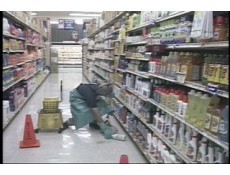
December 17, 2013
5 years later, Wal-Mart still hasn’t paid trampling death OSHA fine


December 17, 2013

Wal-Mart employee Jdimytai Damour was trampled to death in 2008 by a Black Friday crowd. OSHA fined Wal-Mart $7,000 in connection with the incident. The retail giant still hasn’t paid the fine five years later.
That’s because the case is under appeal.
The Huffington Post recently updated this story, looking at two dimensions of it in particular:
Last year, a Wal-Mart spokesman said the company believes the OSHA citation has “far-reaching implications” and could lead to the creation of “unfairly harsh penalties and restrictions on future sales promotions.”
Why might that be the case, at least in the eyes of Wal-Mart and perhaps other retailers? Because OSHA used its General Duty Clause (GDC) to issue the citation to Wal-Mart.
OSHA doesn’t have specific rules regarding protection of employees against excited shoppers. When the agency doesn’t have specific rules governing what it sees as unsafe conditions, it uses the GDC, which states:
“Each employer shall furnish to each of his employees employment and place of employment which are free from recognized hazards that are causing or are likely to cause death or serious physical harm to his employees.”
The important words in that sentence are “recognized hazards.” OSHA said Wal-Mart surely should have foreseen that the crowds, which built for hours before the store’s opening on Nov. 28, 2008, were a hazard to its employees.
Wal-Mart has argued there was no previous federal government or retail industry guidance on how to prevent a trampling death. In effect, the company is saying that a trampling death wasn’t a recognized hazard.
OSHA says a hazard can become recognized in one of three ways:
Now that this case has received a significant amount of media coverage, it’d be hard for any retailer to make Wal-Mart’s argument today.
But just to make sure, OSHA has issued guidance on crowd control.
And Wal-Mart has, in effect, officially recognized that this is a potential problem. Wal-Mart spokesman Randy Hargrove told HuffPost, “Since that time, we’ve developed comprehensive plans in stores around the country, and we’ve worked with nationally recognized crowd management experts.”
Wal-Mart now carefully plans how shoppers enter and exit stores and guarantees availability of sale products to make a crowd frenzy less likely.
The situation in 2008 was different. Damour, 34, was trying to hold back a crowd at the Valley Stream, NY, Wal-Mart when the store’s glass doors gave way and he was overrun. He’d been on the job just a week. He died from asphyxiation. Other store employees climbed on top of vending machines to escape the crowd. There was only one security guard on duty at the time.
Any company that receives an OSHA fine can appeal it to an administrative law judge (ALJ) of the Occupational Safety and Health Review Commission (OSHRC), a government body that acts independently of OSHA.
That’s what Wal-Mart did in this case. The ALJ upheld OSHA’s citation and fine. The retailer appealed to the full OSHRC in 2011.
But the OSHRC hasn’t really been “full” recently, and that’s the reason there’s been no progress in this case since 2011.
The OSHRC has operated without a third commissioner since April 2011. President Obama made a nomination to fill the third spot on Nov. 21, 2013. The U.S. Senate must confirm the appointment.
The full commission can only issue orders when two of its three commissioners are in agreement. It also needs a quorum of two commissioners to hear cases. An OSHRC spokesman tells Huff Post the body lacked a quorum for several months this year and therefore couldn’t decide cases. The Wal-Mart case isn’t on the docket for the rest of 2013.
In the meantime, Wal-Mart doesn’t have to pay the fine.
The retailer has paid something, however, in connection with the case. Wal-Mart set up a $400,000 victim compensation and remuneration fund and gave $1.5 million to local social service programs and nonprofit groups in a plea agreement to avoid criminal charges.
Wal-Mart has also spent a lot of money appealing the OSHA fine. The New York Times previously reported the retailer has spent $2 million fighting the citation.
This article retrieved from Safetynewsalert.com
